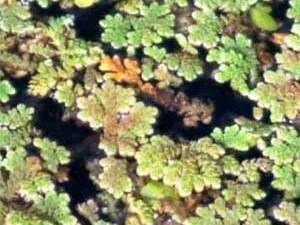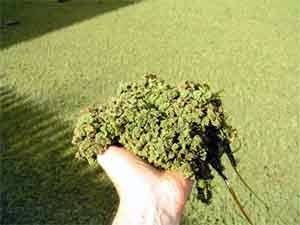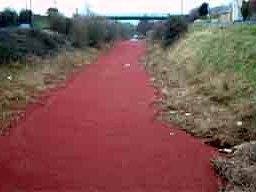[section menu]
Azolla filiculoides
Carpobrotus edulis
Introduction
Lorem ipsum dolor sit amet, consectetur adipiscing elit. Nulla eget posuere augue, a egestas lectus. Morbi mi arcu, pretium nec scelerisque vel, efficitur sit amet quam. Mauris tincidunt sapien hendrerit velit elementum, eu rutrum libero euismod. Etiam vitae velit vitae velit ultricies consequat nec vel nulla. Donec aliquam, quam a imperdiet mollis, ligula nisl fringilla nisi, vitae varius metus ex eget ligula. Aenean consequat imperdiet enim, a semper quam rutrum et.
If you have any information about populations of any of these plants, please contact us.
Azolla filiculoides
Status
An aquatic fern, Azolla was introduced as an aquatic plant for ponds and aquaria. Persistent in garden ponds, it is an occasional escape from cultivation, and is now apparently becoming more widespread. As well as establishing in still fresh and brackish water, but it can also infest flowing water, such as the river Barrow and Limerick canal. The quantity at a site fluctuates from year to year (e.g. Wolfe-Murphy 1997, Lucey 1998).
Control
Water Fern (Azolla liculoides) Invasive Species Action Plan from Invasive Species of Ireland.
Biological Control
BBC Manchester article on Stenopelmus rufinasus, Waterfern Weevil.
Azolla Control, from CABI Bioscience, makes use of the North American weevil Stenopelmus rufinasus. This weevil is a highly effective natural enemy of Azolla filiculoides. The weevil, which can only feed and reproduce on Azolla spp., has proved itself to be successful biological control agent in laboratory and field trials in South Africa as well as the UK.
Actions
Dr Jan-Robert Baars Ph.D. of the School of Biology & Environmental Science at UCD, is experimenting on the possible use of the water fern weevil in Ireland.
Known Sites for Azolla filiculoides (based on Reynolds (2002)
| Vice-County | Location |
| 4 | Lough of Cork, 8 miles (c.13 km) W of Queenstown (Cobh) Junction, first seen there 1934 (Praeger 1946). Marsh by Tramore River, N of Frankfield c.1950 (DBN). Lee Fields 1970s, 1995; Clogheenmilcon marsh, Blarney 1995 (O’Mahony 1996). |
| 5 | Near railway between Little Island and Glounthaune 1907, plentiful in large pond (DBN). Near Queenstown (Cobh) Junction 1911, plentiful in brackish water having spread from adjoining garden (Druce 1911, 1912). Little Island 1974, 1995 (O’Mahony 1996). Little Island 1994-95, and Great Island since 1994 (Lucey 1998). Castlemartyr demesne 1994, artificial lake (M. Scannell). Dower Lough near Castlemartyr 1999 Ballybutler Lough (Scannell 2000). |
| 12 | Inish and Ballyteige Slob, Duncormick, 700 m S of Yaletown Bridge 1997 (DBN). |
| 20 | {Mount Usher garden, Ashford (Pim 1893).} Buckroney marsh 1949, considered a deliberate introduction (Brunker 1949) pond in Buckroney sand dunes 1965 (DBN). |
| 21 | [Near Dublin c.1904 (record in Simpson (1960, p. 413) from an unavailable publication).] Grand Canal and several ponds since early 1980s (FDub 1998, DBN). |
| 22 | S of Drogheda 1957 (Wallace 1959a, but 22 not 31). |
| 36, 37, 39 | Lough Neagh 1988, washed up on the shore (Weyl et al. 1989). |
| 37 | S of Derrytrasna 2001, ditch (I. McNeill). |
| 38 | Clandeboye Lake 1985, introduced there (FNE 1992). |
| 38, 39 | River Lagan in Belfast 1995-96 (Wolfe-Murphy 1997, FBel 1997). |
| 39 | Dunore Point, Lough Neagh 1990, small ponds (FNE 1992). |
References
Lucey, J. (1998) ‘Azolla filiculoides Lam. (Water Fern) in fresh and brackish water in E. Cork (v.c. H5).’ Ir. Bot. News No. 8: 5-7.
O’Mahony, T. (1996) ‘A report on the flora of Cork (v.cc. H3-H5)’, 1995. Ir. Bot. News No. 6: 35-40.
Scannell, M.J.P. (2000) ‘Cloyne, East Cork (H5)’, 26-27 June 1999. Ir. Bot. News No. 10: 50-53.
Wolfe-Murphy, S.A. (1997) ‘Some non-native aquatic plants in the lower River Lagan’. Ir. Bot. News No. 7: 27-28.
Carpobrotus edulis
Status
Carpobrotus edulis, or Hottentot Fig, is an aggressive invader of coastal habitats on the drier eastern coasts of Ireland, and totally smothers indigenous maritime plant communities. At present there are probably just 11-12 populations of the species (see map). In Cornwall and the Channel islands the species is a considerable nuisance, and In Ireland we still have the potential to prevent the species getting too strong a foothold.
Control
Unlike many other invasive species, money is not the limiting factor in removal of Hottentot Fig. The limiting factors are largely time and manpower. Physical removal must be undertaken with care since stems can be removed by nesting seabirds such as shags and cormorants and incorporated into nests, exacerbating the problem. Extensive removal may result in erosion of exposed and de-vegetated substrates. Our experiences on Howth head with chemical control (see below) have been very successful, resulting in rapid and extensive recolonisation of the dead mats of Carpobrotus by Inula, Crithmum and other characteristic cliff plants.
Read the entry for this plant on the Global Invasive Species Database. Read about the eradication of Carpobrotus in Minorca.
Actions
On the Murroughs in County Wicklow (right) there are two patches of Carpobrotus edulis to the north of the Breaches, each about 15 x 2-3 metres in extent, and one smaller patch to the south of the Breaches. In March 2007, 2 square metres were removed from one patch and transported off the site in black plastic sacks (below). Beneath the dense mat of stems the soil was totally devoid of other vegetation. The area was monitored over the summer to determine the success of the removal.
In 2010 the Heritage Council made a generous grant towards control costs, and extensive chemical control was undertaken on Howth head and at a number of smaller sites along the east coast. In 2011 a further grant from Heritage Council has allowed the project to expand to the target of eradication of the plant in all known wild populations as well as an opportunity to follow up previous work. In August/September 2011 resurvey work on Howth head has demonstrated not only the efficacy of the control measures, but a remarkable reappearance of native vegetation cover.
Local botanists have been contacted to assess the size of the other known populations to determine the level of effort required for each site.






